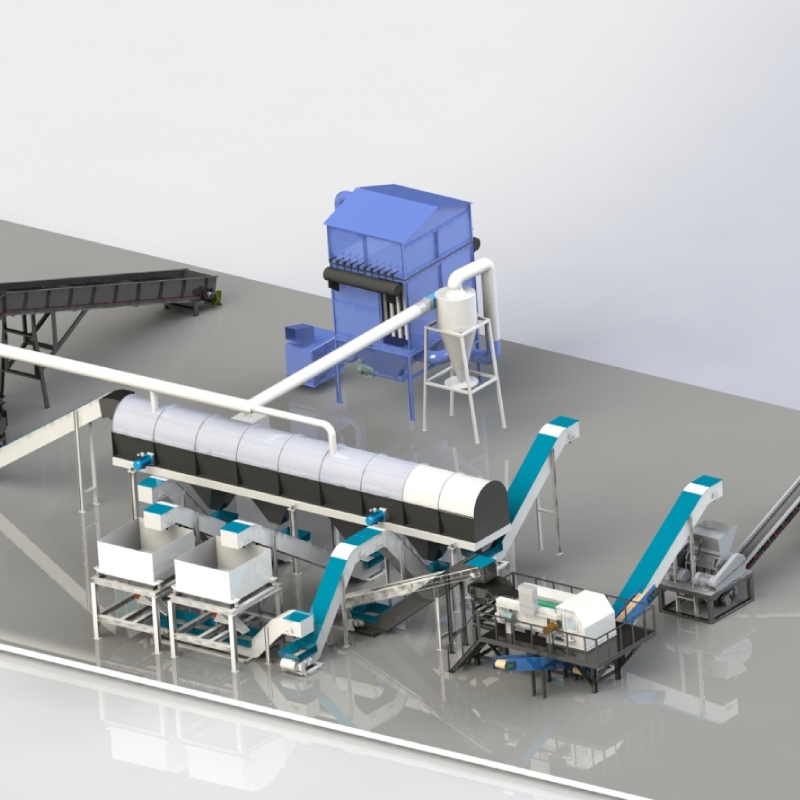
12 月 . 04, 2024 16:20 Back to list
The Dynamics of Shredded Steel Price Understanding Market Trends
The price of shredded steel, a vital component in the recycling and manufacturing industries, is influenced by a myriad of factors that extend beyond simple supply and demand. As global markets evolve, understanding the elements that impact shredded steel prices is crucial for businesses, investors, and policymakers alike. This article delves into the various factors that contribute to the fluctuation of shredded steel prices and the broader implications of these changes.
The Basics of Shredded Steel
Shredded steel is produced by the process of shredding used scrap metal into smaller pieces, making it easier to melt down and repurpose for new applications. It is predominantly used in the production of new steel and other metal products, and its significance lies in promoting recycling and sustainability within the metal industry. The demand for shredded steel is closely linked to the health of the manufacturing sector, particularly in industries such as automotive, construction, and infrastructure.
Key Factors Influencing Shredded Steel Prices
1. Global Economic Conditions The state of the global economy plays a critical role in determining the demand for shredded steel. Economic growth often correlates with increased manufacturing activity, leading to higher consumption of steel. Conversely, economic downturns or recessions can lead to reduced demand, causing prices to fall. Recent disruptions from global events, such as the COVID-19 pandemic, have highlighted the vulnerability of the steel market to economic fluctuations.
2. Scrap Supply Dynamics The supply of scrap metal, including shredded steel, is another significant factor affecting prices. Factors such as municipal recycling programs, industrial by-products, and the overall availability of scrap can create local surpluses or shortages. In times of heightened demand, if the supply of scrap metal cannot keep pace, prices are likely to increase. Additionally, geographical differences in scrap availability can lead to varying prices in different regions.

3. Production Costs The cost of energy, labor, and transportation directly impacts the overall cost of producing shredded steel. Rising energy prices, for instance, can lead to increased operational costs for recycling facilities, which may then be passed on to consumers in the form of higher prices. Therefore, fluctuations in fuel prices or labor wages can have a ripple effect on shredded steel pricing.
4. Government Policies and Regulations Policies related to trade, tariffs, and environmental regulations can play a significant role in shaping the landscape of the shredded steel market. For example, tariffs on imported steel can lead to higher domestic prices by limiting competition, while stringent environmental regulations may increase compliance costs for steel recyclers, resulting in price adjustments.
5. Export Markets The demand for shredded steel in international markets can significantly influence local prices. For instance, countries like China have historically been large consumers of scrap steel due to their expansive manufacturing sector. However, changing trade dynamics and policies can alter the flow of shredded steel, impacting domestic prices based on the level of overseas demand.
The Future of Shredded Steel Prices
Looking ahead, it is essential to consider the growing emphasis on sustainability and environmental responsibility within the steel industry. As global focus shifts towards greener solutions, the demand for recycled materials, including shredded steel, is set to rise. This trend may stabilize prices in the long term, provided that the supply of recyclable materials keeps pace with the growing demand.
Moreover, technological advancements in recycling processes could enhance the efficiency of shredded steel production, potentially reducing costs and influencing market prices further. As industries continue to innovate, the shredded steel market will likely adapt, shaping a future that balances economic viability with environmental stewardship.
In conclusion, the price of shredded steel is a complex interplay of various factors, from global economic health to local supply and demand dynamics. Understanding these influences is crucial for stakeholders looking to navigate the ever-changing landscape of the steel market and make informed decisions in this critical industry.
Latest news
Unveiling the Power of Eddy Current Separator
NewsSep.25,2024
Transform Your Home Recyclin:home metal shredder
NewsSep.25,2024
The Future of Waste Management with Recycling Line Picker
NewsSep.25,2024
The Benefits of a Metal Recycling Plant
NewsSep.25,2024
Revolutionize Material Separation with Onwang Technology
NewsSep.25,2024
Innovative Waste Management: Unveiling the MSW Sorting Plant
NewsSep.25,2024